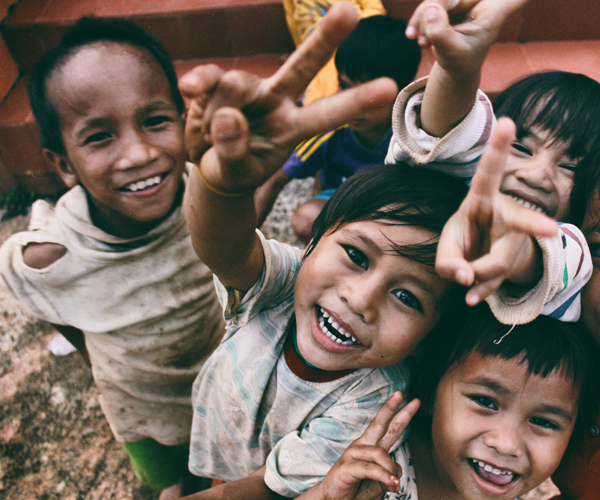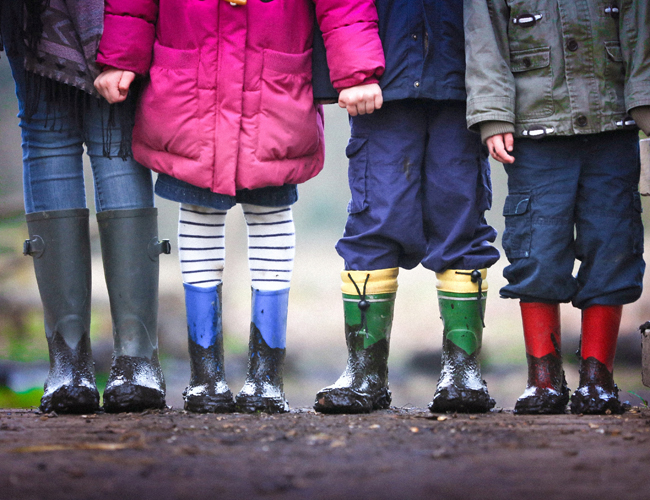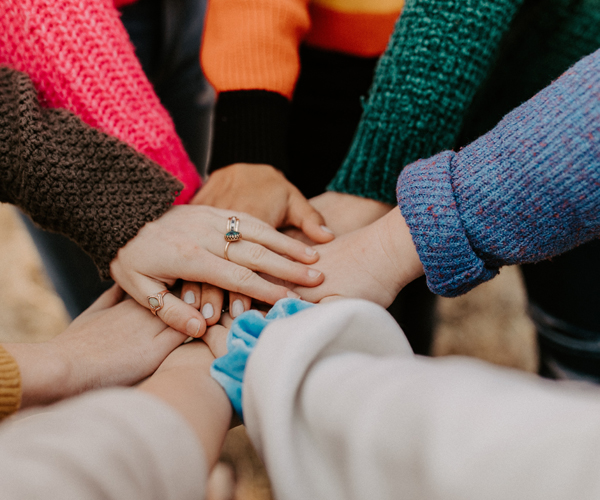Did You Know?

What is obsessive-compulsive disorder?
January 15, 2024Many children experience repetitive thoughts and behaviours. A preschooler may insist on having the same book read to her every night for several months. A middle-schooler may frequently express his displeasure about attending a new after-school program. But these kinds of typical behaviours differ from the more intense, enduring and impairing obsessions and compulsions that are the hallmarks of obsessive-compulsive disorder (OCD).
Obsessions involve recurrent and persistent thoughts or images that are intrusive, unwanted and time-consuming, taking more than an hour per day. Compulsions, meanwhile, are repetitive behaviours or mental acts that a child feels obliged to do, typically to relieve distress associated with an obsession. Young people with OCD usually experience both obsessions and compulsions. These may include fear of contamination, fear of being aggressive, wanting to make things “just right,” as well as distressing sexual or religious thoughts. For more information, see Vol. 16, No. 1 of the Children’s Mental Health Research Quarterly.

Bullying can be reduced
January 8, 2024A systematic review by the Children’s Health Policy Centre found five interventions that reduced at least one form of bullying, albeit with only modest effects for some interventions. Four of these programs were delivered in classrooms and showed success from the early years to adolescence: Youth Matters (elementary schools); Roots of Empathy (elementary and middle schools); Bullies and Dolls (secondary but not middle schools); and Media Heroes (middle and secondary schools). One clinical intervention — Integrative Family Therapy — was also effective at reducing bullying by teenage boys.
These findings suggest several implications for practice and policy.
- Reach children across a range of ages. The effective antibullying interventions we identified can be delivered in elementary, middle and secondary schools. So, programs can start early and be offered across a range of ages, which means they will reach more children to prevent the harms that come with bullying.
- Invest in reducing all forms of bullying. Most of the programs we reviewed aimed to reduce face-to-face bullying. But one program — the 10-session version of Media Heroes — effectively reduced cyberbullying. Efforts to reduce cyberbullying could be modelled on this successful program and evaluated for effectiveness in BC.
- Ensure adequate program duration. Two unsuccessful programs stood out for being particularly brief. Both Incremental Theory of Personality Intervention and the four-session version of Media Heroes were delivered over one day. In contrast, the five successful programs ranged in length from three weeks to two school years. So, interventions should mirror these longer durations.
- Watch for unintended consequences. Bullies and Dolls led to very different outcomes based on the grades students were in. While the program reduced victimization for students in Grades 8 and 9, it increased both victimization and perpetration for students in Grades 6 and 7. So this program caused harm for younger students and should not be used with them. As well, these findings illustrate the importance of always monitoring outcomes to ensure that program benefits outweigh harms. Evaluating programs in BC is particularly important when programs have been developed and tested elsewhere, and when there are no replication randomized controlled trials.
- Recognize that some children and families can benefit from the help of a mental health practitioner. Schools are excellent venues for reaching large numbers of children with antibullying programs. But some young people may need the support of a practitioner to address bullying and other aggressive behaviours. The clinic-based Integrative Family Therapy may be a helpful option for teenage boys who bully others.
Adults play crucial roles in creating and sustaining the environments that help children flourish and keep them safe. These roles include striving to ensure that homes, schools and communities are free of bullying in all its forms, for all children. For more information, see Vol. 15, No. 4 of the Children’s Mental Health Research Quarterly.

Roots of Empathy supported by Indigenous people
December 11, 2023Roots of Empathy is a Canadian-developed program that aims to reduce bullying, aggression and violence in general. Certified instructors deliver the 27-session program over one school year to students in kindergarten and Grades 4 and 8. More than 165,000 BC students have participated in Roots of Empathy. And the program’s reach continues to grow. Many First Nations, Inuit and Métis communities in BC and throughout Canada have been delivering the program. It has also garnered noteworthy support from the Assembly of First Nations. In 2008, this organization endorsed a resolution supporting the program, citing its compatibility with traditional First Nations teachings and world views. For more information, see Vol. 15, No. 4 of the Children’s Mental Health Research Quarterly.

What protects children or puts them at risk of bullying?
December 4, 2023Researchers have examined risk factors for both engaging in bullying and being bullied. One particularly robust meta-analysis incorporated 153 studies that included children from kindergarten to Grade 12. Researchers began by classifying children’s experiences with bullying into three categories: perpetrator only, victim only, and both perpetrator and victim. Some of the risk factors for being involved in bullying include:
- Living in communities experiencing challenges (e.g.: high crime rates)
- Having academic challenges
- Having lower status among peers
- Having peers who encourage negative behaviour
- Having a negative view of oneself
In terms of identifying what can protect children from both bullying others and being bullied, the news is less encouraging. A meta-analysis that included 19 studies of youth aged 11 to 18 years identified only one protective factor: older age reduced the risk of perpetrating bullying. For more information, see Vol. 15, No. 4 of the Children’s Mental Health Research Quarterly.

Nov. 20 is Universal Children’s Day
November 20, 2023The United Nations’ Universal Children’s Day, which was established in 1954, is celebrated on November 20 each year to promote international togetherness and awareness among children worldwide. UNICEF, the United Nations Children’s Fund, promotes and coordinates this special day, which also works towards improving children’s welfare.
Universal Children’s Day is not just a day to celebrate children for who they are, but to bring awareness to children around the globe who have experienced violence in forms of abuse, exploitation, and discrimination.
But in a report by the Children’s Health Policy Centre, published last year in the journal Evidence-Based Mental Health, estimated that one in eight children has mental disorders at any given time, causing symptoms and impairment, therefore requiring treatment. Yet even in high-income countries, most children with mental disorders are not receiving services for these conditions. The report discusses the implications for this situation, particularly the need to substantially increase public investments in effective interventions. It also discusses the policy urgency, given the emerging increases in childhood mental health problems since the onset of the COVID-19 pandemic.
Readers can get access to the report, here.

Bullying happens in Canada and BC
November 13, 2023Data reveals important information about Canadian children’s experiences with bullying. A study of 1,000 youth ages 10 to 17 found more than 26% reported being bullied at least once in the past month, with most reporting both in-person and online experiences. And among BC students aged 12 to 19 years, 53% reported experiencing at least one of three forms of bullying in the past year. This included 39% having been socially excluded on purpose, 38% being teased to the point of feeling bad or extremely uncomfortable, and 8% being physically bullied. As well, 4% of students reported missing school due to bullying in the past month.
Many of the same bullying experiences were documented among Métis students in BC. Specifically, 41% were socially excluded on purpose, 47% were teased to the point of feeling bad or extremely uncomfortable, and 13% were physically bullied. For more information, see Vol. 15, No. 4 of the Children’s Mental Health Research Quarterly.

Experiences of bullying are relatively common
November 6, 2023A recent meta-analysis of 80 studies involving youth ages 12 to 18 found that just over 34% reported perpetrating in-person bullying and just over 15% reported perpetrating cyberbullying. While rates of in-person bullying were slightly more than double those of cyberbullying, the two types were strongly correlated, leading the study’s authors to conclude that in-person bullying and cyberbullying were in essence just different ways of enacting similar behaviours. For more information, see Vol. 15, No. 4 of the Children’s Mental Health Research Quarterly.
Bullying can lead to long-term mental health problems
October 23, 2023What counts as bullying? Most definitions of bullying agree that it involves aggression both intentional and repetitive, occurring in situations where there is a power imbalance between individuals. This definition recognizes that bullying can take various forms, including physical, verbal and social. This definition also acknowledges that proximity can vary, from bullying in person to bullying online.
Regardless of definition, there is no question about the seriousness of childhood bullying, since bullying has led to children dying by suicide. Even if the consequences are not as dire, being victimized in childhood has been causally linked with subsequent mental health problems, including anxiety, depression and suicidality. As well, longitudinal studies have demonstrated continuing mental health challenges for victims of childhood bullying into middle age. As a result, there is a collective ethical imperative to understand and stop childhood bullying. For more information, see Vol. 15, No. 4 of the Children’s Mental Health Research Quarterly.

October is ADHD Awareness month
October 16, 2023Attention Deficit/Hyperactivity Disorder or ADHD affects children of every age, gender, IQ, religious and socio-economic background. During October — which is ADHD awareness month — parents and practitioners are reminded that ADHD is the second most common mental health disorder in children, exceeded only by anxiety.
While medication is often seen as a first resort for such children, there is evidence supporting child Cognitive Behavioural Therapy (CBT), behavioural therapy and neurofeedback. Unlike medications, these psychosocial treatments have the added advantage of continuing to show benefits months after the intervention ends. Another advantage for both CBT and behavioural therapy is that many practitioners are familiar with these interventions, making their implementation feasible. Child CBT and behavioural therapy are therefore highly recommended. For more information, see Vol. 11, No. 1 of the Children’s Mental Health Research Quarterly.

World mental health day is Oct. 10
October 9, 2023World Mental Health Day — an Oct. 10 United-Nations-sponsored event — gives people and communities a chance to unite behind the theme “Mental health is a universal human right.”
Reports by the UN Human Rights office have shown that people with mental health conditions and those with psychosocial disabilities experience disproportionately higher rates of poor physical health and reduced life expectancy. Stigma is also a significant determinant of quality care and access to the full range of services required.
Access to better living conditions, security, food, shelter and housing are all necessary for people’s mental health. Yet one in eight people globally are living with mental health conditions, which can impact their physical health, their well-being, how they connect with others, and their livelihoods. Mental health conditions are also affecting an increasing number of adolescents and young people.
For more information on the prevalence of childhood mental disorders in high-income countries, see here.
